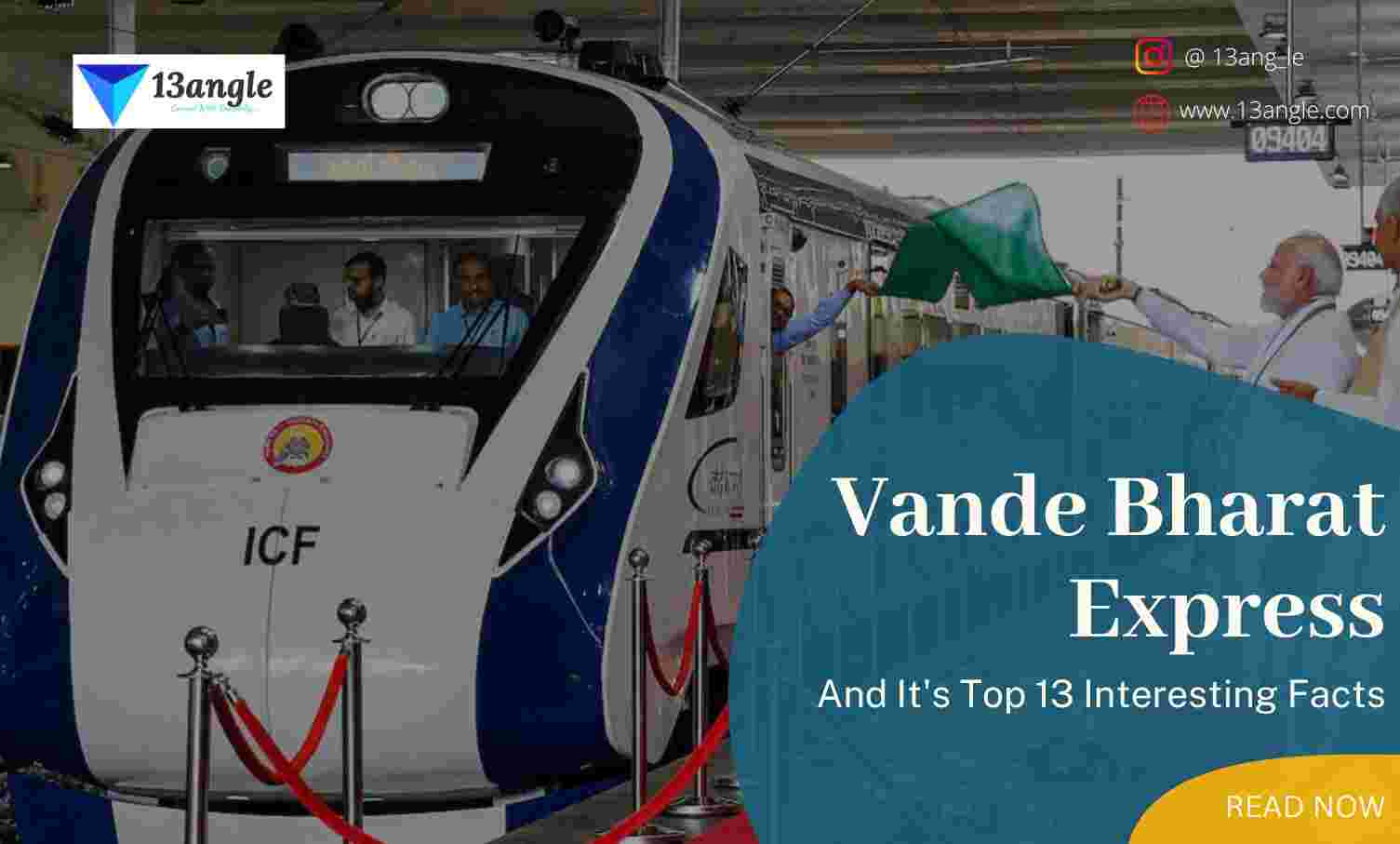- Umang Sagar
- Govt. Initiatives, Recent article
Vande Bharat Express
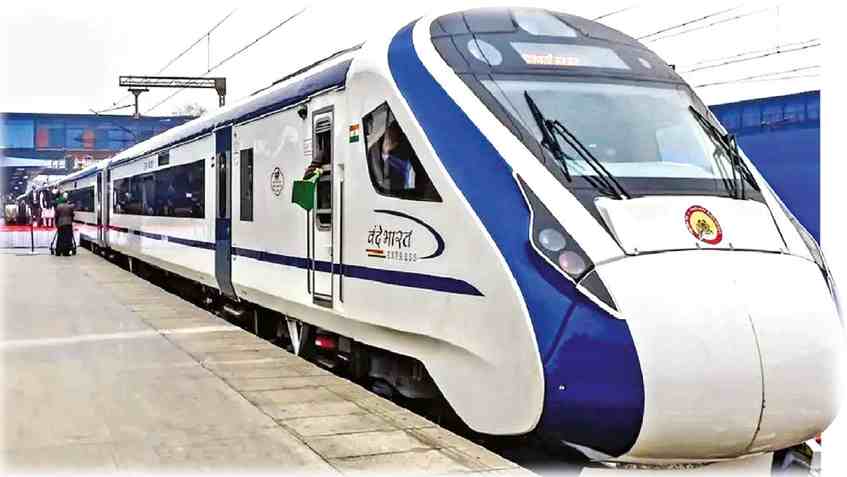
Introduction
The Vande Bharat Express, also referred to as Train 18, is an electric multiple-unit train run by Indian Railways that travels at a semi-high speed. The government-owned Integral Coach Factory (ICF), in Chennai, created and produced it.
In recognition of the fact that the train was wholly made in India, the service was renamed the Vande Bharat Express on January 27, 2019.
It was created with the idea of cost optimization and low-cost maintenance in mind. Operations commenced on February 15, 2019.
Background
The “Make in India” program has received major support from the Indian government. The Indian Railways introduced the Vande Bharat Express, the country’s first indigenous semi-high-speed train, as a shining example of the “Make in India” success story.
On February 15, 2019, the inaugural Vande Bharat Express train on the New Delhi Kanpur-Allahabad-Varanasi line was flagged off with the commercial running starting from 17th February 2019. Prime Minister Narendra Modi signaled the departure of the fifth Vande Bharat Express trains on November 11, 2022, from Mysuru to Puratchi Thalaivar Dr. MGR Chennai Central. Additionally, this train is a first for South India.
The Vande Bharat Express has similar travel classes to the Shatabdi Train but superior amenities and can travel at a top speed of 160 kmph. It seeks to give travelers a completely different traveling experience.
This train’s defining characteristics are speed, safety, and service. In just 18 months, the Chennai-based Railways Production unit Integral Coach Factory (ICF) has been the driving force behind entirely in-house design and manufacture, computer modeling, and working with many vendors for system integration.
Manufacturing
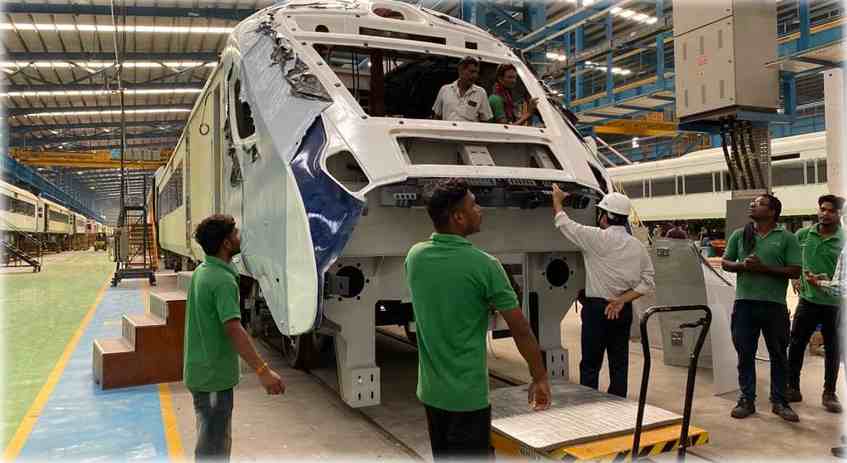
- In October 2018, the “Train-2018” manufacture was finished. It was intended to take the place of the Shatabdi Express, which at the time had a 30-year life and take 15% more time to accomplish the same distance. According to numerous speed certificates of LHB coach trains on the RDSO website, India conducted a trial run at this speed for the first time in 2000 by a train with LHB coaches, but the Vande Bharat Express has a higher acceleration. During test runs, the train reached an operational speed of 180 km/h.
Speed
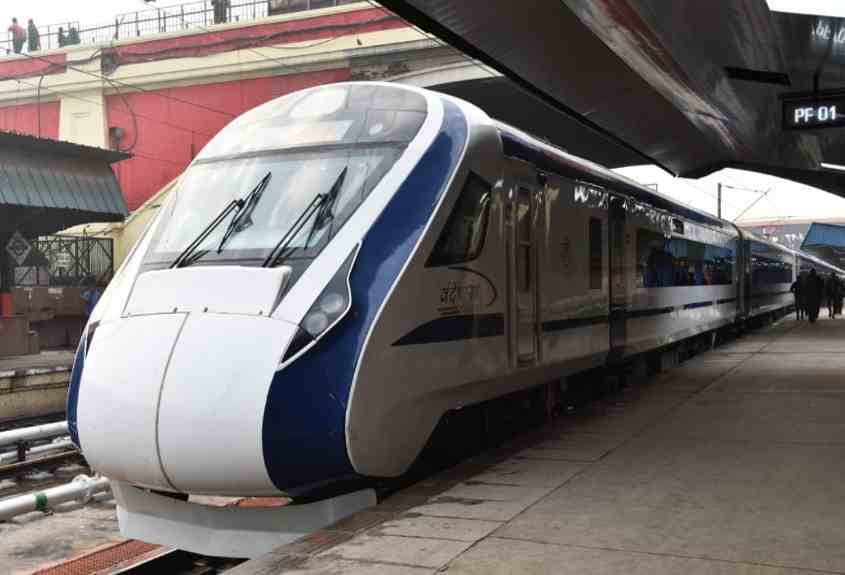
The top speed on the Vande Bharat Express is 160 km/h. Although it was able of exceeding 180 km/h during testing, the rails could not withstand such high speeds. As a result, the train is currently operating at a top speed of 130 km/h (81 mph), and the speed between Chennai and Mysuru will be increased. In this context, the Habibganj-New Delhi Shatabdi Express is the second-fastest train in India based on its maximum permitted speed of 150 kmph during the Tughlakabad to Agra Cant part of its route, and the Gatimaan Express is the fastest train in India based on its maximum permissible speed of 160 km/h (99 mph) during that part of its route.
Famous for its acceleration and deceleration is the Vande Bharat Express. On the Indian rail network, it accelerates at the highest rate. Due to its second version’s ability to accelerate from 0 kmph to 100 kmph in just 52 seconds during trials, its acceleration is comparable to that of bullet trains. According to two Facebook posts from September 30, 2022, on a page with verified tags indicating that it belongs to Western Railway, the first and second versions of the train reach 0-100 mph (0-160 Kmph) in 145 sec and 129 sec, respectively. The second model accomplishes the 0-100 Kmph sprint in 52 seconds. The first version’s designated residual acceleration is 0.05 m/s2, and the second version is 0.11 m/s2.
On a level track, a train must be able to accelerate from 0 kmph to 160 kmph in a maximum of 140 seconds. A minimum train length of 16 Car rake shall be taken into consideration for the purposes of this provision. (It might be an overview, but the first and second versions’ respective running times—140 and 129 seconds, respectively—are already noted with the code.)
The train must be built with a 160 kmph maximum service speed in mind. During testing, the train must be built so that it can run safely at a top speed of 180 kmph.
Inauguration

Train 18 was officially opened on February 15, 2019, and was prepared to start running between New Delhi and Varanasi after four years of planning, manufacturing, and testing. The railway minister soon changed its name to “Vande Bharat Express.” The first run was kicked off by Prime Minister Narendra Modi on February 15 and the commercial run began on February 17. It connects the sacred city of Varanasi to the capital city through Kanpur and Prayagraj, cutting the travel time along the route by 15%.
Regenerative brakes are also expected to allow a 30% saving in electricity cost as compared to their predecessor. It will outpace the Shatabdi Express by 30 kilometres per hour while moving at a speed of 160 kilometres per hour (99 mph) (19 mph). Despite having been tested at speeds of up to 180 km/h, the trainset’s operational speed has been limited to 130 km/h because, according to an internal report by Indian Railways, just 0.3% of the nation’s track can support such speeds. The other vehicles in the train are all powered. The Chair Car CC Class tariff for the 8-hour trip is $1,440.00 and travels a total of around 762 kilometres from New Delhi to Varanasi station.
Train Version
1. Vande Bharat 1.0 (VB1)
As part of the Make in India program, the Integral Coach Factory (ICF), led by Sudhanshu Mani, created and produced the Vande Bharat. It was first referred to as Train 18. On January 26, 2019, Piyush Goyal, the minister of railways, revealed that the train’s name would be Vande Bharat Express.
The exterior of the Vande Bharat Express features an aerodynamic shape to lessen air resistance at high speeds. It has a driver cabin at either end, making ending stations’ turnaround times quicker. With 16 passenger cars and a seating capacity of 1,128 persons, the trainset has a weight of 430 tonnes. Two of the center compartments are first class with 52 seats each, and the remaining compartments area coach with 78 seats apiece.
A coach’s chassis measures 23 meters in length, and the train’s frame is composed entirely of stainless steel. Motorized alternate coaches enable more rapid acceleration and deceleration and even power distribution. In order to improve accessibility between coaches and lower noise, the cars are joined and completely sealed. The train has bio-vacuum restrooms, rotatable seats that may be positioned in the direction of travel, GPIS-based passenger information systems, and more (only in executive class). Vande Bharat makes use of regenerative braking.
The Vande Bharat is capable of traveling at a top speed of 180 km/h. In 54.6 seconds, it can accelerate to 100 km/h, and in 145 seconds, it can achieve its top speed. Televisions measuring 24 inches are installed in trains as passenger entertainment and information system. Electrical components in the train’s undercarriage can resist floods of up to 40 centimeters.
The train takes 8 weeks to assemble. Approximately 80–85% of the materials used to create Vande Bharat are supplied domestically. The wheels, seats, doors, braking systems, transformers, and electrical parts such as processing chips are among the imported items with ambitions to manufacture them domestically. The wheels and seats of the train were purchased from Ukraine and Spain, respectively.
2. Vande Bharat 2.0 (VB2)
In comparison to the earlier model, the VB2 trains can achieve a speed of 100 km/h in 52 seconds as opposed to 54.6 seconds. The train can accelerate to 160 km/h in 140 seconds, which is 5 seconds faster than the original Vande Bharat generation. Additionally, VB2 is lighter, weighing 392 tons as opposed to 430 tons for VB1. Wi-Fi is available onboard and larger 32-inch televisions are available on trains. The VB2’s air conditioning system uses 15% less energy than the Vande Bharat trainset’s first air conditioning system. Other upgrades in VB2 include touch-free sliding doors, automatic plug doors, emergency communication systems, accessible restrooms, a roomier driver’s cabin, and reclining chairs in every coach.
The redesigned rakes will have a push-back arrangement for smooth reclining to alleviate the seat reclining concerns of the previous iteration. The Kavach train protection system is installed in VB2.
The second iteration of this train will offer updated amenities, seating, security and surveillance systems, and emergency features in addition to the previous facilities. The new rolling stock will include new rakes with four emergency windows, disaster lights in all coaches if the lighting system fails, fire survival cables inside of door circuits, availability of ventilation for three hours in the event that the power to the air conditioner fails, and an increased number of emergency push buttons—four per coach—among other safety features.
In addition to other new features, the new coaches will have a centralized Coach Monitoring System for all forms of electrical and climate management. In order to assure dependability during monsoons up to 65 centimeters, the official noted that the new coaches will be equipped with a bacteria-free air conditioning system and enhanced flood protection of underframe electrical equipment.
3. Vande Bharat 3.0 (VB3)
The Vande Bharat 3 trainset will mark the introduction of sleeper carriages. Three classes—AC-1, AC-2, and AC-3—will be offered. The VB3 is anticipated to have a design life of 35 years and a top speed of 180 to 200 km/h. In comparison to the VB2, the VB3 is anticipated to be lighter, more energy-efficient, and offer improved passenger comforts.
- The coaches on half of the VB3 trainsets are composed of steel, whereas the coaches on the other half have articulated bogies and are made of aluminum.
4. Vande Bharat 4.0 (VB4)
- The highest speed of the fourth-generation Vande Bharat trains will be 200 km/h. Aluminum alloy, a lightweight material, will be used to make VB4 coaches. The VB4 is anticipated to have better passenger conveniences such as 3-pin and USB power sockets for each passenger, zero discharge bathroom systems, and wheelchair accessibility features. Additionally, a cattle guard will be installed on the VB4 to cushion impacts with animals weighing up to 600 kg and prevent animals from being swept under the train in the case of an accident. It’s anticipated that tilting trains will make up at least half of all VB4 trainsets, marking India’s first commercial use of the technology. The first VB4 rake is expected to enter in 2026.
List Of Vande Bharat Express Train
Popular Stations Of Vande Bharat Express Train
- NDLS- New Delhi Railway Station
- SVDK- Shamata V D Katra Railway Station
- BSB- Varanasi Junction
Popular Routes Of Vande Bharat Express Train
- Delhi to Katra
- Delhi to Varanasi
- Varanasi to Delhi
- Katra to Delhi
Safety Features Of Vande Bharat Express Train

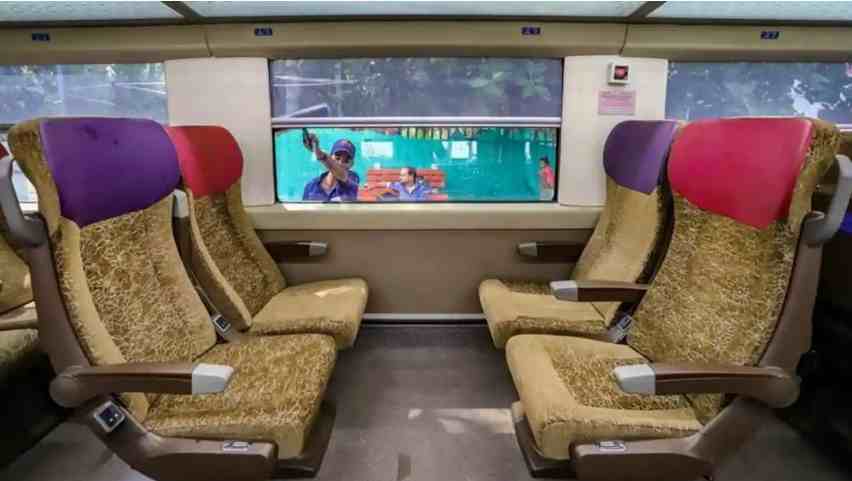
- This train has been provided with four platform side cameras outside the coach, including rearview cameras. Also, the train has been designed to increase Indian Railways’ Green footprint by dispensing with power cars and saving about 30 percent of electricity with the advanced regenerative braking system. In any emergency, the loco pilot and train guard can easily communicate with each other as well as passengers, the loco pilot of Vande Bharat Express.
- Vande Bharat trains would have improved features including reclining seats, automatic fire sensors, CCTV cameras, on-demand content with wifi Facility, three-hour battery backup, and GPS systems to make traveling safer and more comfortable.
Future Of Vande Bharat Trains
By August 2023, ICF aims to have produced 75 Vande Bharat trains. The roof-mounted package unit (RMPU), also contains a photocatalytic Ultraviolet air purification system.
This system is built and placed on both ends of the RMPU, as advised by the Central Scientific Instruments Organization (CSIO), Chandigarh, to filter and clean the air free from contaminants like bacteria, viruses, and other microorganisms coming through fresh air and return air. Traveling on the new trains would be more comfortable. The new trains’ coaches will be lighter than those of the earlier trains for this reason.
The train’s weight has been decreased by 38 tons to 392 tons, and it can still run even if the rails are under two feet of floodwater. They are constructed from stainless steel. Less weight would make the passengers feel more at ease even at high speeds.
Recent Updates Related To Vande Bharat Train

Vande Bharat Train pelted with stone in Bihar.
Vande Bharat Train was again attacked by stones in Vishakhapatnam.
On January 15, 2023, PM Modi virtually flags off the Vande Bharat Express, which connects Secunderabad and Visakhapatnam.
The Vande Bharat Express from Mumbai to Gandhinagar will now stop at Borivali Station.
The Vande Bharat Express between Delhi and Jaipur will soon begin service on Indian Railways.
Top 13 Facts About Vande Bharat Express
Train 18 or Vande Bharat Express is India’s first engineless train. To date, trains in India have a separate engine coach while train 18 has an integrated engine like a bullet or metro train.
The train has 16 fully airconditioned chair car coaches with two seating options – Economy and Executive class. An amazing feature is that the Executive class has a revolving chair that can turn 180 degrees.
one of the most important facilities provided by the Vande Bharat Express is the automatic doors with sliding footsteps which are centralized control like Metro trains.
The semi-high-speed train will serve the food which is included in the price of the ticket itself. If you are traveling from New Delhi to Varanasi, then you will be served breakfast and lunch aboard the train. If you will travel from Varanasi to New Delhi, then you will be served tea snacks, and dinner onboard the train.
Vande Bharat Express offers onboard Wi-Fi access for users to use the services of the internet for infotainment. Also, on mobile phones or tablets, you will be able to use the internet to access the content.
The train also has GPS based advanced passenger information system which will update you about the upcoming stations and information.
It can run at a speed of over 180 Km per hour faster than the Shatabdi Express.
To solve the problem of sanitation in the train that usually people face bio-vacuum toilets are used for both Indian and Western-style washrooms. It will provide zero discharge as we see in the flights. Also, touch-free bathroom fittings are provided to allow users to experience sanitation without worry.
All 16 coaches of the train are fitted with CCTV cameras for the complete security of the passengers onboard. The automatic doors of the train will open only when the train comes to a complete halt. The train starts only when the doors are completely locked.
To make the Vande Bharat express train as accessible as possible for those with disabilities, some of the coaches will contain spots for wheelchair parking.
ICF claims that train 18 is manufactured under the “Make in India” initiative at a cost that is around half that of an equivalent imported train set. Approximately Rs 6 crore would be the average cost for each coach.
The train is designed in such a way that passengers can see a glimpse of the driver’s cabin.
There are modular racks in each coach for the luggage and are more spacious than other trains like Gatiman Express.



